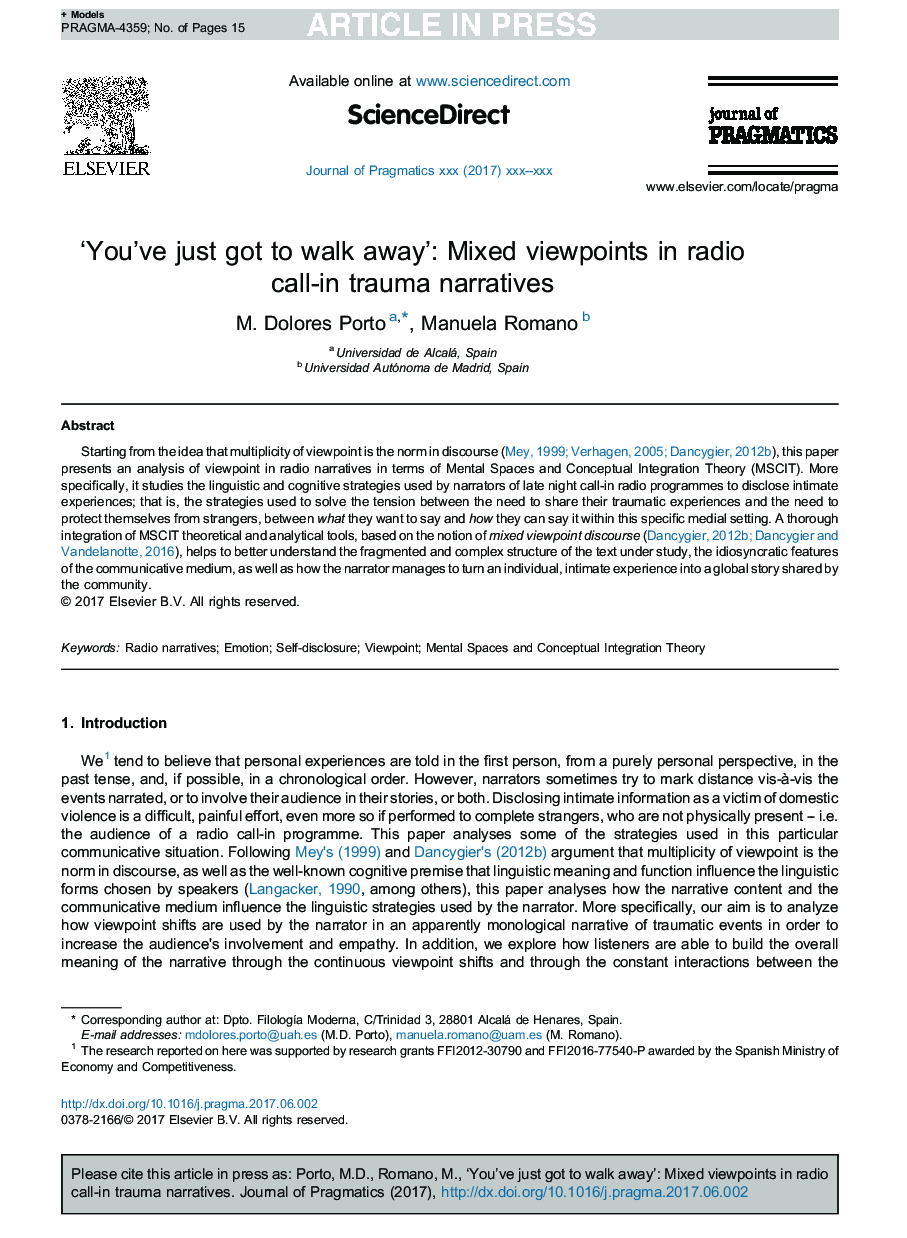| Article ID | Journal | Published Year | Pages | File Type |
|---|---|---|---|---|
| 7297724 | Journal of Pragmatics | 2017 | 15 Pages |
Abstract
Starting from the idea that multiplicity of viewpoint is the norm in discourse (Mey, 1999, Verhagen, 2005, Dancygier, 2012b), this paper presents an analysis of viewpoint in radio narratives in terms of Mental Spaces and Conceptual Integration Theory (MSCIT). More specifically, it studies the linguistic and cognitive strategies used by narrators of late night call-in radio programmes to disclose intimate experiences; that is, the strategies used to solve the tension between the need to share their traumatic experiences and the need to protect themselves from strangers, between what they want to say and how they can say it within this specific medial setting. A thorough integration of MSCIT theoretical and analytical tools, based on the notion of mixed viewpoint discourse (Dancygier, 2012b, Dancygier and Vandelanotte, 2016), helps to better understand the fragmented and complex structure of the text under study, the idiosyncratic features of the communicative medium, as well as how the narrator manages to turn an individual, intimate experience into a global story shared by the community.
Keywords
Related Topics
Social Sciences and Humanities
Arts and Humanities
Language and Linguistics
Authors
M. Dolores Porto, Manuela Romano,
